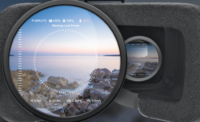Floyd first started trying out mobile hardware in the field for inspection data collection in the early 1990s. He says the tools were bulky. "Then, we tried pen-based computing and laptops, but we rarely fully used it in the field. Tablets are changing that."
Floyd says his inspection teams will spend some time with the app before he decides whether to adopt it. However, the iPad platform "is a very stable environment to work on," he says, which is why he prefers it over other hardware used in the field. "Our guys used to take notes on paper and then copy them back down at the office or, if they brought their laptop, in the truck," says Floyd.
The iPad's ease of use bolsters Bentley's claim that inspectors can streamline their workflow and slice inspection times by 25%.
An annual investment of $20.8 billion is needed "to eliminate the nation's backlog of deficient bridges by 2028," says the ASCE. Bentley and other companies seeking to improve the inspection process believe that improved software is one way to do so.
"I see 3D modeling as the future of inspection," says Shaffer. A 3D model of a complex bridge structure could enable off-site experts to guide and coach inspectors facing unusual conditions to make sure all necessary checks are made, he says. Such off-site consulting is already making waves in the medical industry. As Shaffer points out, "Some doctors are now coaching nurses remotely."


